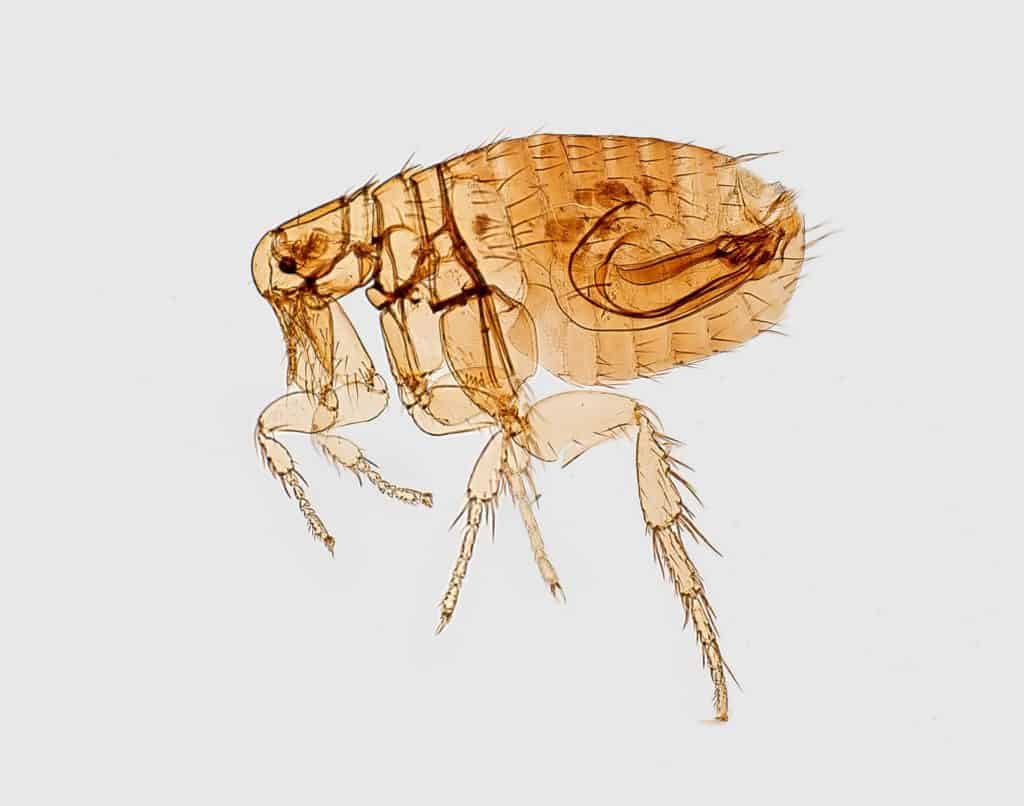Fleas are parasitic animals that feed on blood. As a pet owner, it is important to spot the signs of fleas on your dogs.
We share with you these common signs and symptoms to help tell when your dog has fleas. Knowing these signs and attending to these symptoms would help aid in early prevention and prevent infection.
How to Spot the Signs of Fleas on your Dogs
How do I know if my dog has fleas?
Your furry pet is an ideal host animal for a blood-sucking parasite since he is warm and coated. Your dog’s furs make an agreeable home for fleas and their eggs.
Any pet’s body can create an environment that can sustain the whole flea life cycle.
How can you Tell if your Dog has Fleas?
Being small, these fleas are hard to find unless you look closer. These common signs and symptoms would help tell when there are fleas on your dogs.

1. Excessive scratching
When your dog scratches himself all the time, and for no visible reason, then your dog might have fleas.
When a flea bites, it excretes flea saliva that can cause skin allergies and irritation. These flea allergies cause excessive scratching that may eventually lead to skin infections. Hence, at the first sign of flea infestation, it is best to practice flea control and prevention.
2. Hair loss
Another sign that there are adult fleas on your dog is hair loss.
For no reason at all, you suddenly notice that your dog’s once-furry coat has areas of baldness. Check closely as it might be a symptom of flea infestation.
Loss of hair on dogs is not really caused by the biting of adult fleas. Rather, it is the effect of too much scratching.
3. Red skin patches
When you check closely on those bald areas, you might also notice red patches.
This might be due to scratching or flea allergy dermatitis. The latter occurs when flea saliva gets in contact with a dog’s skin, leading to itchiness and other problems.
4. Flea bites
When your dog experiences itchiness in a particular area of his body, it might be a sign of a flea bite.
But, what do flea bites look like on dogs? Inspecting closer, you can see if it is indeed the case when the skin is sore, and you see tiny red specks.
5. Pale gums
As fleas suck out the blood of our beloved furry companions, they may develop a deficiency of red platelets or red blood cells. This deficiency would cause them to have pale gums and become weak.
In extreme cases, it may lead to anemia and could be fatal to smaller pets or puppies.
How do you Check for Fleas?
When you are seeing any of these signs on your dog, it’s time to make a thorough check-up. But, where do you look for fleas on a dog?
There are three tests to determine the presence of fleas on your pet.
1. White Paper Towel Test
In this test, you must require your pet to lay down on his side on a white towel. Once he is on his side, comb his fur continuously. You may want to use a flea comb to ensure that the smallest of dirt comes with the comb.
Check if there are specks of dirt or brownish-black spots falling on the towel. These specks of dirt may be flea dirt, a combination of the parasite’s blood and flea feces. The brownish-black spot, on the other hand, may be an adult flea.
The presence of flea dirt is a definite indication that your dog has fleas.
2. Manually Checking
Another way of checking is by manually checking your pet. By nature, fleas love to hide on a dog’s armpits, legs, ears, the base of the tail, belly, and skin folds.
To do this, have your dog lie down on his back. Then, check every inch of your dog’s body, from nose to tail.
When you find fleas, immediately get rid of them.
You might also want to examine some things around your house, like the carpet, furniture, etc., for the presence of larvae. When these parasites’ eggs hatch, they turn into larvae that burrow on things inside the home. This would help in flea prevention as larvae would eventually turn into adults.
3. Visit your Vet
For an official diagnosis and treatment, bring your pets to the vet. There are several treatment options, and your vet is the best person to give advice on what to choose.
To a beginner pet owner, these symptoms of blood-sucking parasites may be hard to determine and resolve. But, with the help of your vet, flea infestations and more complications are avoided.